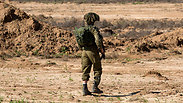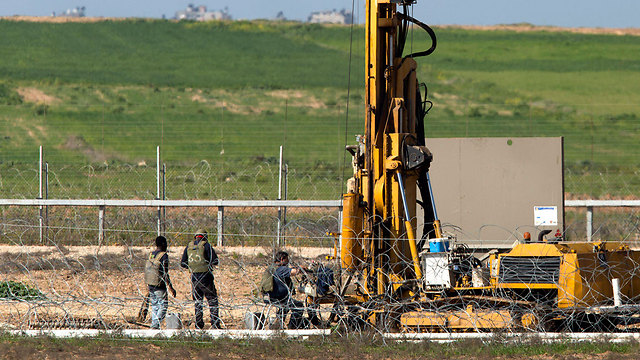
The wall that could spark a war between Israel and Hamas
Analysis: If another round of fighting breaks out on the southern front this summer, it likely won’t be over the assassination of Hamas commander Mazan Fukha, which the organization is attributing to Israel, but rather over the obstacle defense system—the major project aimed at eliminating the tunnel threat.
The assassination of Hamas commander Mazan Fukha, and the professional way in which it was carried out, turned the public’s attention to the Gaza Strip. But despite the buzz created by the assassination of the terrorist who had planned attacks in Judea and Samaria from Gaza, the significant strategic event we should be focusing on is the one which has yet to happen. If another war breaks out on the southern front, it likely won’t be over the current assassination which Hamas is attributing to Israel, but rather over the obstacle defense system—a major underground project aimed at eliminating the tunnel threat.
The obstacle project is supposed to provide the unequivocal solution to the tunnel problem. The system is comprised of a defensive wall, partly overground and partly underground, along the Gaza border fence.
Israel began the construction work several months ago, on an area of just a few meters and in specific places, and is expected to speed up the work in the summer: Hundreds of special engineering tools, which will require heavy IDF security around them, will work in more than 40 different places along the fence.

As Chief of Staff Gadi Eisenkot reported to the Knesset’s State Control Committee, which focused on the state comptroller’s scathing report on Operation Protective Edge, the project is expected to cost around NIS 3 billion (roughly $830 million), in addition to NIS 1.2 billion (roughly $331 million) that have been invested in the development of technological solutions for locating the tunnels.
According to defense establishment assessments, once the obstacle project is completed in about two years around about 65 kilometers of the border fence, it will hermetically prevent the infiltration of tunnels.
This will create a dilemma for Hamas, which the organization has never faced before: How to operate when the strategic ability it has been building for years to offset the IDF’s offensive ability is being taken away, while the rules of the game are completely changing.
We can cautiously assume that Hamas will not accept the massive construction work and will try to torpedo the project from the start, even at the cost of launching another round of fighting against Israel. As far as Hamas leader Yahya Sanwar and military chief commander Muhammed Deif are concerned, a war without tunnels is out of the question.
So in spite of the justified statements made in the Israeli defense establishment about the deterrence that has indeed been working since Operation Protective Edge, the IDF must prepare for the possibility of another round of fighting this summer. These preparations should be done while drawing all the conclusions raised in the comptroller’s report, focusing not only on handling the tunnels but also on the home front in the Gaza border area, which Hamas sees as Israel’s weak spot.
Despite the assessments regarding an impending round of fighting, the figures point to a relatively calm period. Since Operation Protective Edge, the IDF has reported about 40 incidents in Gaza. Even after Fukha’s assassination over the weekend, Israeli officials believe that although Hamas will try to respond by carrying out a terror attack in Judea and Samaria, it is avoiding and will avoid firing rockets from the Gaza Strip. Hamas prefers to maintain the calm in the strip in order to stabilize its rule there.
Nevertheless, and despite the obstacle system’s anticipated success in foiling the existing tunnels and blocking the ones that might be dug in the future, we should ask ourselves whether the State of Israel and the IDF should be investing NIS 4.2 billion against a threat, which has been defined by the chief of staff as serious, but tactical rather than strategic. Couldn’t the army have used this huge sum for a different purpose, like a dramatic improvement in intelligence or the capabilities of the Ground Force, which have been neglected? Wouldn’t it be better to invest in the tools of combat—in the defense, survivability level and lethal abilities? Or in training the reserve forces?
There are many challenges, and there are more and more abilities that will be relevant in additional and significant fighting areas—and not just in Gaza.










